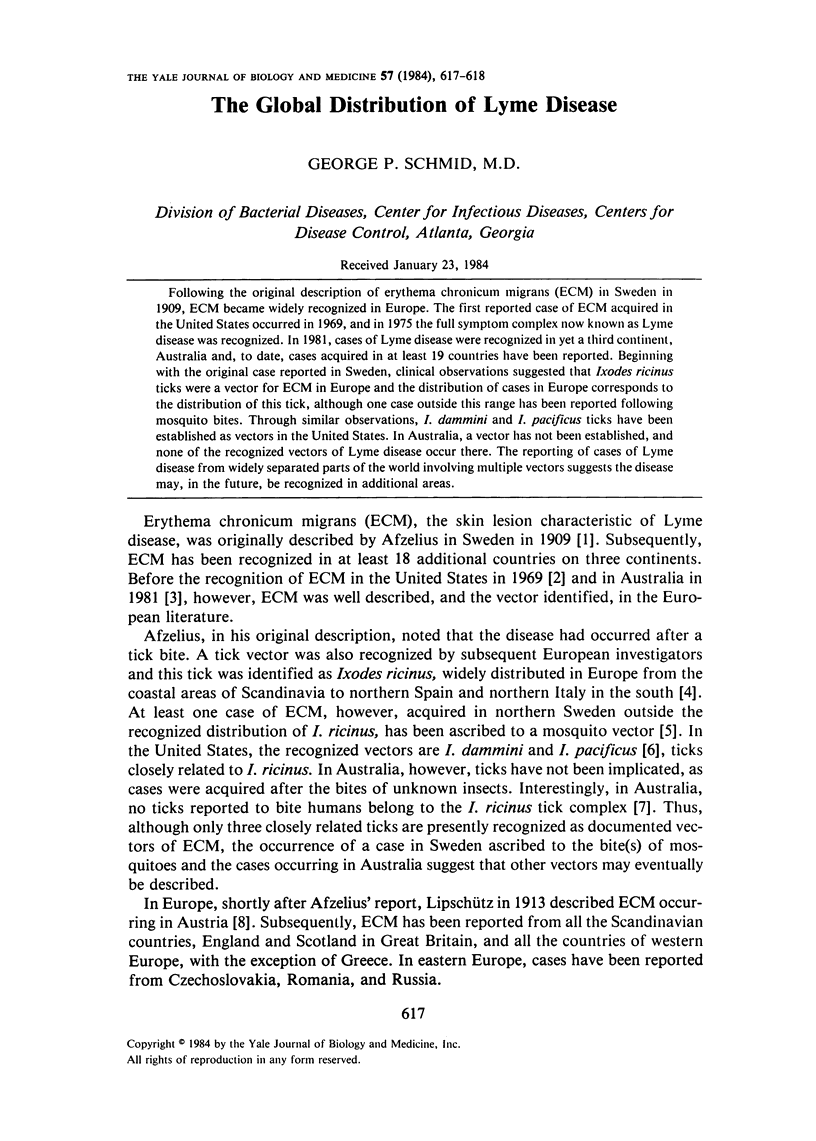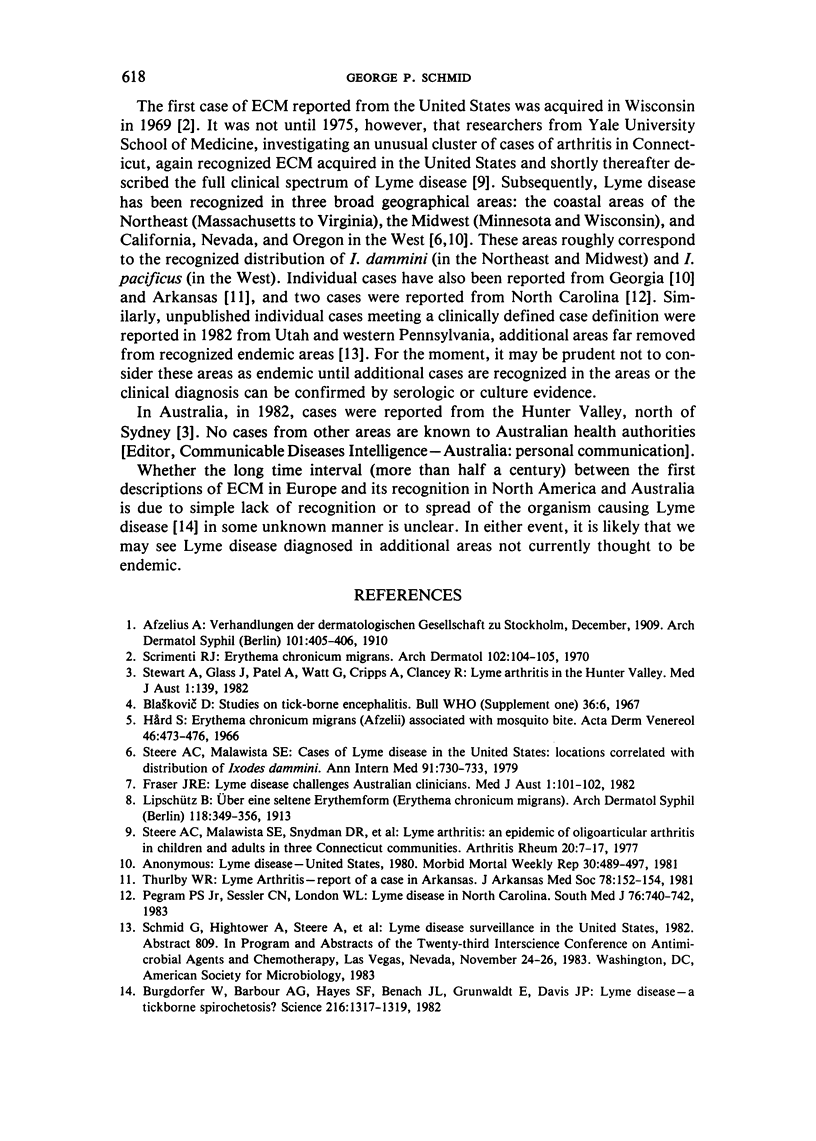Abstract
Following the original description of erythema chronicum migrans (ECM) in Sweden in 1909, ECM became widely recognized in Europe. The first reported case of ECM acquired in the United States occurred in 1969, and in 1975 the full symptom complex now known as Lyme disease was recognized. In 1981, cases of Lyme disease were recognized in yet a third continent, Australia and, to date, cases acquired in at least 19 countries have been reported. Beginning with the original case reported in Sweden, clinical observations suggested that Ixodes ricinus ticks were a vector for ECM in Europe and the distribution of cases in Europe corresponds to the distribution of this tick, although one case outside this range has been reported following mosquito bites. Through similar observations, I. dammini and I. pacificus ticks have been established as vectors in the United States. In Australia, a vector has not been established, and none of the recognized vectors of Lyme disease occur there. The reporting of cases of Lyme disease from widely separated parts of the world involving multiple vectors suggests the disease may, in the future, be recognized in additional areas.
Full text
PDF

Selected References
These references are in PubMed. This may not be the complete list of references from this article.
- Burgdorfer W., Barbour A. G., Hayes S. F., Benach J. L., Grunwaldt E., Davis J. P. Lyme disease-a tick-borne spirochetosis? Science. 1982 Jun 18;216(4552):1317–1319. doi: 10.1126/science.7043737. [DOI] [PubMed] [Google Scholar]
- Fraser J. R. Lyme disease challenges Australian clinicians: the implications of Australia's first reported case of Lyme arthritis. Med J Aust. 1982 Feb 6;1(3):101–102. doi: 10.5694/j.1326-5377.1982.tb132178.x. [DOI] [PubMed] [Google Scholar]
- Hård S. Erythema chronicum migrans (Afzelii) associated with mosquito bite. Acta Derm Venereol. 1966;46(6):473–476. [PubMed] [Google Scholar]
- Pegram P. S., Jr, Sessler C. N., London W. L. Lyme disease in North Carolina. South Med J. 1983 Jun;76(6):740–742. doi: 10.1097/00007611-198306000-00016. [DOI] [PubMed] [Google Scholar]
- Scrimenti R. J. Erythema chronicum migrans. Arch Dermatol. 1970 Jul;102(1):104–105. [PubMed] [Google Scholar]
- Steere A. C., Malawista S. E. Cases of Lyme disease in the United States: locations correlated with distribution of Ixodes dammini. Ann Intern Med. 1979 Nov;91(5):730–733. doi: 10.7326/0003-4819-91-5-730. [DOI] [PubMed] [Google Scholar]
- Steere A. C., Malawista S. E., Snydman D. R., Shope R. E., Andiman W. A., Ross M. R., Steele F. M. Lyme arthritis: an epidemic of oligoarticular arthritis in children and adults in three connecticut communities. Arthritis Rheum. 1977 Jan-Feb;20(1):7–17. doi: 10.1002/art.1780200102. [DOI] [PubMed] [Google Scholar]
- Stewart A., Glass J., Patel A., Watt G., Cripps A., Clancy R. Lyme arthritis in the Hunter Valley. Med J Aust. 1982 Feb 6;1(3):139–139. doi: 10.5694/j.1326-5377.1982.tb132207.x. [DOI] [PubMed] [Google Scholar]
- Thurlby W. R. Lyme arthritis--report of a case in Arkansas. J Ark Med Soc. 1981 Sep;78(4):152–154. [PubMed] [Google Scholar]


